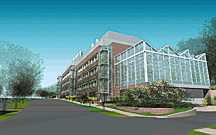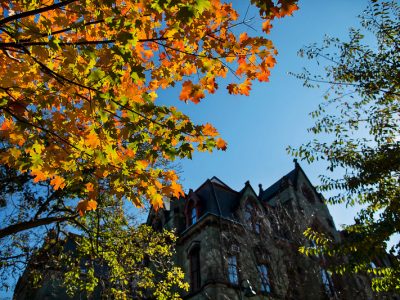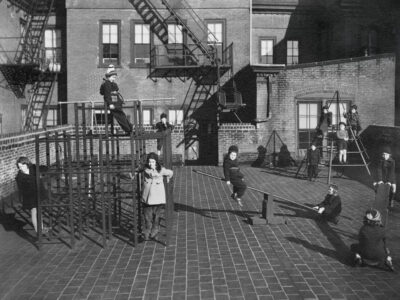“Universities don’t change their intrinsic value systems and intrinsic nature lightly or overnight—nor should they,” Provost Robert Barchi Gr’72 M’72 GM’73 was saying. But, he added, “they do have as one of their charges pushing the edges of knowledge, and imparting that new knowledge to our students and to the community that we serve.” As a result, “we always have to be thinking about where our fields and disciplines are going, what the cutting edge is, and to be thinking about re-casting ourselves in the most efficient mode for providing that kind of education—and thinking about what education means now, that it might not have meant 20, 50, or 100 years ago.”
Barchi’s forward-looking comments came during an interview about Penn’s new strategic plan, “Building on Excellence: The Next Agenda,” a draft of which was released this past spring and can be viewed at almanac.upenn.edu/archive/FC-Agenda.html. Not surprisingly, the plan (the successor to the Agenda for Excellence) is the result of a lot of input, and bears the imprimatur of Barchi, President Judith Rodin CW’66, and John Fry, the recently departed executive vice president. It was first discussed by the trustees in November 2000, then subjected to six months of discussions about goals and priorities by the Council of Deans, the academic planning and budget committee, the president’s advisory group, and the executive vice president’s senior management team. That in turn led to the establishment of 14 committees made up of more than 200 faculty, staff, and students, both undergraduate and graduate. It also reflects feedback from an open forum this past February and comments since then.
As the introduction makes clear, strategic planning “does not necessarily involve re-invention, radical change, or right-angle turns: Penn is already a place of immense achievement across a broad horizon.” Rather, the plan proposes to build on the University’s strengths, which include a “world-class faculty,” the “diversity of our people and ideas,” the incredible “interdisciplinary environment” that comes with having 12 schools on one campus, its urban location, its increasingly international scope, and its “entrepreneurial and engaged spirit,” which manifests itself in a “singular energy and vibrancy.”
The first strategic objective comes under the heading of Academic Excellence: to “solidify Penn’s position as one of the premier research and teaching institutions in the nation and in the world.”
Since nothing is more essential to Penn’s preeminence than “recruiting and retaining a faculty of universal excellence,” the plan emphasizes that such excellence “must be reflected in the undergraduate education we offer, the graduate education we provide in training future generations of faculty, and the research we carry out.”
“It is the great faculty that makes this a great university,” Barchi added, taking pains to emphasize that that great faculty is already largely in place. As Penn’s profile as a premier institution continues to rise, its faculty becomes “much more visible as a target of recruitment,” he noted. To counter that, Penn must “provide a nurturing environment for junior faculty to develop their career,” one in which faculty “feel so valued and feel that their work is so enabled that they don’t think about leaving or talking to another university about another offer.” Furthermore, he said, “we have to be looking aggressively to see which faculty at other institutions would be better served by being at Penn—and going after those faculty in the same way that other institutions are coming after ours.” And as the nature and structure of a faculty continue to evolve, he noted, “we probably will need more flexibility in the kinds of faculty that we identify and the kinds of people that we hire in various educational capacities or research capacities.”
Another of the plan’s goals is to “sustain excellence in all undergraduate programs while building on unique aspects that differentiate Penn from its peers.” Among the areas of focus are the college-house system, the “wheel concept in the hub,” and writing and speaking across the University, as well as a continued emphasis on the “important interdisciplinary programs already in place.”
In addition, Barchi said, “we will look at elements of our undergraduate education that differentiate us among our peers.” Penn is “one of the top five, six, seven universities in the country,” he noted, “and as we look at undergraduate education now, we want to add to the excellence by focusing on differentiating programs.”
Another important element for undergraduate education is having a “capstone academic experience” for all, Barchi said. “One of the things that differentiates Penn from the very best liberal-arts schools in the country is the fact that we do have graduate and professional education, all on a compact campus. Seven of our professional schools rank in the top 10 nationally. It’s a unique resource. But it’s only a unique resource if our undergraduates take advantage of it.” At some point in their career, Penn undergraduates should be “immersed in the issue of
creating new knowledge,” he added, “something that is outside the classroom, beyond the strictly didactic.”
The gist of the Urban Community priority, said Barchi, “is that we are a great urban institution.” In the past, “the urban aspect of that title worked against us,” he acknowledged, but since then “we have invested a tremendous amount of effort in our relationships with the community, in helping to build community, and now we are in the enviable position of being an urban university where the urban is an asset rather than a deficit.
“We need now to bring that into the academic life as well,” he added. “We need to be focusing on the excellence of programs that relate to urban problems. We have many of these programs on campus now, and they do not in their sum have the luster that they should if you look at the individual parts. So we’re looking for ways now to capitalize on those strengths, and then to build into them stronger academic components —stronger undergraduate and graduate programs, stronger research programs—that knit it all together.”
“It is widely acknowledged that the next revolution in the expansion of human knowledge will take place in the life sciences,” the plan states. And among universities, “Penn is virtually unique in having a world-class medical school and medical-research enterprise, an academic health-delivery system, and a natural-sciences and engineering academic infrastructure on the same compact campus,” thus providing “an opportunity for synergy and innovation that is unsurpassed.”
Within that field, the plan recommends investing in areas such as genomics, bioinformatics, biocomputational modeling, stem-cell biology, cognitive neurosciences, systems neuroscience, and cardiovascular biology.
Barchi cited the priority of Technological Innovation as one that “demonstrates how we approach and make choices.” While technology is a “critical factor in almost every aspect of our discovery process in society,” he noted, “at the same time, we recognize that we are not a school that has the size to be excellent in every area of technology. So we have to focus on selective excellence.”
One such area is computer-information sciences; another is the “interface between engineering and life sciences, focusing on bio-engineering, bio-technology, which we think is hugely important from the societal point of view, but also is an incredible opportunity for Penn, specifically.” The third is in the realm of nanotechnology, which as Barchi pointed out “encompasses a number of traditional engineering disciplines.”
The Arts, Humanities, and Society priority talks about constructing a “broad arts and culture curriculum to integrate better the resources of local cultural institutions into an enriched common experience for all undergraduate students.” Penn is located in a city “rich with cultural resources,” Barchi noted. “We’re looking at ways in which we can take advantage of these resources within our own community and our bordering community, to integrate them into educational opportunities for our students in a more global way.”
The Continuum of Education objective, which states that Penn should “provide a continuum of educational opportunities to engage its learners throughout their lives,” is a “very important goal for the University,” Barchi said. “We need to re-think and re-shape education for the next 20 years. And we are. But we don’t believe that education is going to be done in an episodic way in the future the way it has been in the past 30 or 50 years—where people come to an institution for four years and leave, or come for two years of master’s education then leave, and may not see us again ever, or may see us periodically, or come back for a reunion.
“We feel that we have a much broader role in education in society which transcends that episodic character—that education should be a continuous process,” he added. “We should be engaging learners before they ever come to campus—and then throughout their careers. We should be exploring all the venues and platforms we can for the delivery of that kind of content, and we should be moving aggressively to make our educational process a continuous process and not an episodic one.
“The major part of that is improving our relationships with our alumni, and building and strengthening the connections with those 275,000 alumni we have around the country. Not by asking them for more money every time they hear from us, but by bringing them something that’s value-added—bringing them intellectual content and getting them back in for learning experiences and for professional experiences—or whatever.”
And since “the traditional approach to learning—on-campus, four-year education—does not make efficient use of the very large physical plant here at Penn,” Barchi concluded: “What we need to do is to be much more efficient about making this a learning environment that’s in use 24 hours a day, seven days a week, 12 months a year.”
The Next Agenda
Back in the fall of 1995, when Penn announced its Agenda for Excellence, it “articulated its commitment to become one of the premier research and teaching universities in the nation and the world,” noted President Judith Rodin, Provost Robert Barchi, and then-Executive Vice President John Fry in a letter to the University community this past spring. That letter, which announced the new strategic plan—Building on Excellence: The Next Agenda—also listed the accomplishments of its predecessor. Among them: Penn’s academic rankings have risen; student selectivity has improved; faculty accomplishments and recognition have increased; research funding has “dramatically expanded”; administrative restructuring has “yielded greater efficiency and effectiveness”; revitalization of the West Philadelphia community has “accelerated”; and fundraising efforts have “strengthened considerably.”
But, the new plan notes: “The twenty-first century represents a new world for Penn, and for American higher education generally.” And over the next five years, it adds, “Penn must challenge itself to achieve four strategic objectives that form the framework of the following plan.” Those objectives are:
• “Solidify Penn’s position as one of the premier research and teaching institutions in the nation and in the world.”
• “Build upon our special strengths to develop five selected academic priorities that will differentiate Penn among international research universities of the first rank”—The Urban Community, The Life Sciences, Technology Innovation, The Global Opportunity, and Arts, Humanities and Society.
• “Adapt our educational and alumni offerings to the learning needs of current and future generations.”
• “Develop the physical, financial, operational, and entrepreneurial capacities to sustain our academic excellence.”
Barchi on the Bio-feedback

In recent months, the Gazette has received dozens of letters from faculty, staff, and alumni concerned about Penn’s plans to build a five-story Life Sciences building in the garden area near the Biology Pond, also known as the BioPond. “Not only would this shrink the BioPond and garden area,” states the Penn Environmental Group on its Web site, “but construction would surely disrupt natural life, and shade from the new building would inhibit growth of plants.” (Visit our Web site for a selection of letters.) During our interview, we asked Provost Robert Barchi about the complaints.
“There is a strong and, I must say, not fully informed group of people who are concerned about the Biology Pond and the impact that the Life Sciences building will have on it,” he responded. “We also are incredibly concerned about the same thing, and we have delayed the construction of this building by a year to complete even more feasibility studies and impact studies and everything else about how this building might be built. And we think we have developed a design which will have an absolute minimal impact on the Biology Pond in this area, and in fact will create an environment back there which will be even more beautiful when we’re finished than it is now.”
Among the comments that he has heard and read which reflect a “lack of full understanding,” Barchi cites a suggestion (contained in a number of e-mails to the Gazette) to make the building six or seven stories tall but thinner, so it wouldn’t encroach as much on the area. “But it is precisely the height of the building which is one of the major issues that we dealt with when we looked at the sun patterns and the shading,” he says. “If you look at the design, you will see that everything is oriented in that direction: the height of the building, the location of the mechanical components on the roof, the shape of the covering over them which is curved so that the sun shadow lines are minimized, all of it designed to minimize the impact on the Biology Pond.”
Furthermore, he adds: “Virtually all of this building will be built on the footprint of things that are already there, that are coming out, including the very areas that have been mentioned by some of these folks. That’s exactly where we are building, so that the impact on the pond area itself, the garden, will be minimal.”
While there will be the “visible impact of seeing something happening” during construction, Barchi says, “I do believe that we have been extraordinarily careful to design something that has minimal impact on that area and to create something which, when finished, will augment rather than be a detriment to the conjoining area of the Biology Pond.”




